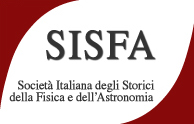(ENGLISH VERSION BELOW)
Padova si trova in una posizione privilegiata del Veneto, a pochi chilometri da Venezia e dalle città di Verona e Vicenza, patrimonio UNESCO. Appena fuori Padova, nel comprensorio dei Colli Euganei, vi sono Abano e Montegrotto, con le sorgenti termali più grandi d'Europa.
Padova è una città pittoresca con strade ad arco, palazzi storici e ampie piazze animate da vivaci mercati e dai tanti giovani studenti che frequentano l'Università, una delle più antiche e prestigiose del mondo.
Da visitare a Padova:
Cappella degli Scrovegni. Se sei interessato, prenota la visita per tempo perché i posti sono limitati.
Orto Botanico e Museo Botanico
Il Museo della Natura e dell'Uomo, inaugurato il 23 giugno scorso, è la principale eredità permanente lasciata alla città dalle celebrazioni per gli 800 anni dell'Università, ed è il più grande museo di storia naturale italiano.
Palazzo Bo e Sala dei Giganti. La visita comprende il Teatro Anatomico e la Cattedra di Galileo. Attenzione: non è possibile visitare Palazzo Bo autonomamente; è necessario prenotare preventivamente un tour guidato.
MusMe, il Museo di Storia della Medicina.
Palazzo della Ragione, una delle più grandi sale pensili al mondo, era l’antica sede dei tribunali cittadini.
La Basilica di Sant'Antonio, con i suoi chiostri e i suoi musei.
Il Battistero del Duomo di Padova, con gli affreschi Trecenteschi di Giusto de’ Menabuoi.
___________________________________
Padua is located in a privileged position in the Veneto region, a few kilometers from Venice and the UNESCO cities of Verona and Vicenza. Just outside Padua, in the Euganean Hills district, there are Abano and Montegrotto, with the largest thermal springs in Europe.
Padua is a picturesque city with arched streets, historical buildings and wide squares animated by lively markets and by the many young students who attend the University, one of the oldest and most prestigious in the world.
Things to visit in Padua:
Scrovegni Chapel. Places are limited; book in time, if you are interested.
Botanical Garden and Botanical Museum
The Museum of Nature and Humankind- The Museum opened on 23 June; it is the main permanent legacy left to the city by the celebrations for the 800th anniversary of the University; it is the largest natural history museum in Italy.
Palazzo Bo and Hall of the Giants (Sala dei Giganti). The visit includes the Anatomical Theater and the Galileo Chair. Attention, please: self-visits are not allowed.
MusMe, the Museum of the History of Medicine.
Palazzo della Ragione, one of the largest hanging halls in the world; it was the ancient seat of the city courts.
The Basilica of Saint Anthony, and its cloisters and museums.
The Baptistery of the Cathedral of Padua, and the 14th-century frescoes by Giusto de' Menabuoi.

